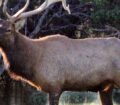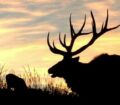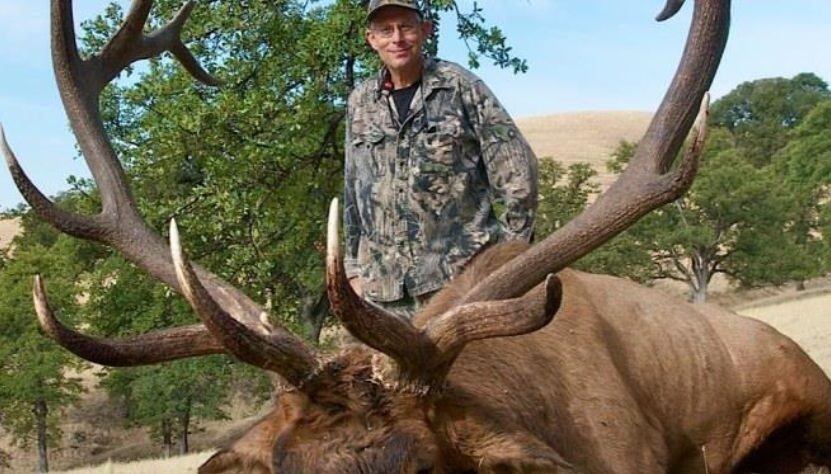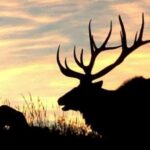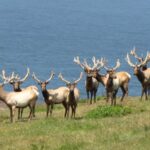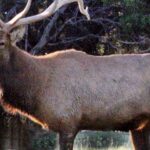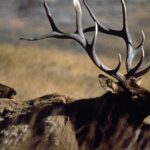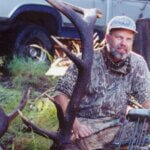Editor’s Note: In the turkey-hunting fraternity, one of the toughest turkeys to take in the Continental U.S. is the Osceola gobbler. Actually hunting the Osceola isn’t any different from hunting any other turkey; however, the area where he lives in Florida is very small. Although, there’s some public hunting for the Osceola, it’s fairly well restricted. The same is true about the Roosevelt elk and even more so the Tule elk. California is the only state that has both the Roosevelt and the Tule, as well as the Rocky Mountain elk. JITW wanted to take a closer look at these far western elk, and what’s required to take them.

So, we talked to Parrey Cremeans, a hunting guide from northern California, who has been hunting and guiding in the far west since 1988. His guiding service is called Just For Hunting, and his phone number is: 650-888-0808. He’s taken several elk and called in many more for his clients, besides guiding for black-tailed deer, mule deer, antelope, turkeys (Rio Grande and Merriam’s gobblers), bear, black bears and hogs. Or, to learn more about hunting elk specifically, you can find more information here. If you’re interested in hunting any one of these three elk subspecies, you need to book a hunt about two years in advance or even earlier than that. Here’s a map of California’s Elk Hunt Zones.
My friend and I were hiking into an area where we previously had found a spike bull Roosevelt elk. We decided there had to be some other elk there. But the elk weren’t very vocal that morning, so we started hiking in the direction we thought the elk might have gone. We came to a creek, crossed the creek and popped out on top of the ridge just above the creek. We spotted a bull laying in a wallow not 20 yards in front of us. We looked like a deer in headlights when we saw that bull so close to us. Once the bull spotted us, he looked like an elk in headlights. That bull spooked, and the two other bulls with him spooked. They jumped and ran up a hill, stopping about 40 yards from us.
As soon as we saw the bulls stop, we both pulled our bows back to full draw, but we held our shots – both hoping the other would call out the range we were from the elk. When you’re hunting with a partner or with a guide, and you spot an elk that’s within bow range, you usually expect your partner to call out the range you are from the bull to pick out the sight pin you want to use for aiming. Well, each of us thought the other was going to call out the range because we both had tags. We’d learned that when you had a shot at 40 yards in Roosevelt elk country, you’d have at the most 1 to 2 seconds to get the shot off before the elk would leave the county. Those bulls didn’t stand in that opening in front of us but for an instant, and our hesitation caused neither one of us to get a shot.
When you’re hunting Roosevelt elk in thick cover, that type of encounter occurs much more often than having a chance to actually release an arrow. That’s the thing you have to prepare for when you decide to hunt for Roosevelts. You may see, hear or get close enough to a bull to take a shot, but because the terrain is so steep, and the cover is so thick, you may have a great hunt seeing and hearing several bulls, but never find them in a place where you can take them. Or, you only may see them for a second or two before you can draw your bow and shoot.
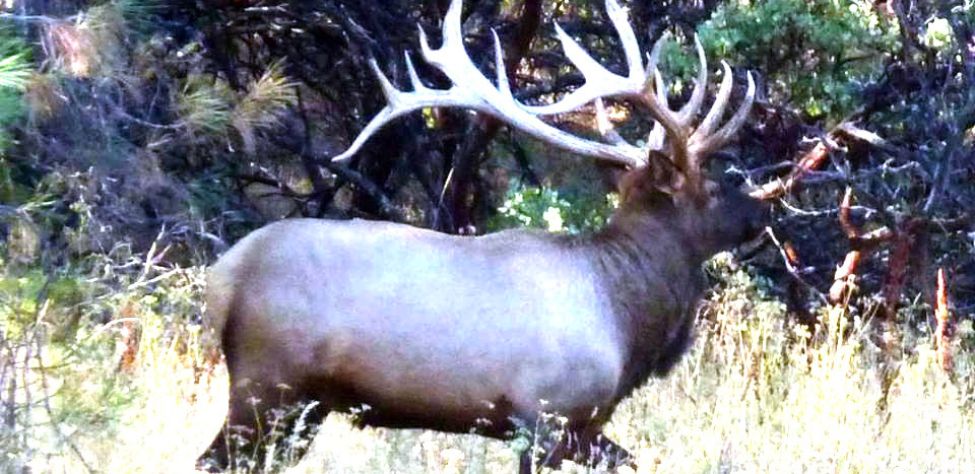
Learning about the Biggest Roosevelt Elk Cremeans Ever Has Taken:
I took my biggest elk ever in my home state of California on a special state Roosevelt elk tag – it scored 307 inches. In California, a landowner may not be able to draw a Roosevelt elk tag, even if he has elk coming on to his property all during the season. The state offers what’s called share tags, and if you draw one of those, you can hunt that landowner’s property. Harvesting a Roosevelt elk isn’t too hard, if you’re lucky enough to draw one of these landowner tags. On this particular hunt, we were hunting a pasture on a landowner’s property. Although I had to search a few days to find a good bull I wanted to take, I finally downed a 7X6 bull that scored 307 inches for his rack, which was a big rack for a Roosevelt elk. To go in the Boone and Crocket (B&C) record book, a Roosevelt elk had to score 292.
We didn’t do a lot of calling on this hunt because we were hunting during the early season – the third week in August. Since the bulls were still together, we set-up in the evenings or in the early mornings. We would sneak out in the back pasture each day of the hunt and see what size bulls might be available for me to take. We did try some calling to draw in bigger bulls that were just off the property line to come onto the land we had to hunt. But they never came over to our lands. However, I was really proud to be able to take the best bull we saw in three days of hunting with my bow.
Looking for more content? Check out our YouTube channel and watch “Bob Long on the Importance of the Guide/Hunter Relationship” by John E. Phillips.
Expert Guidebooks on Elk Hunting: Best Sellers
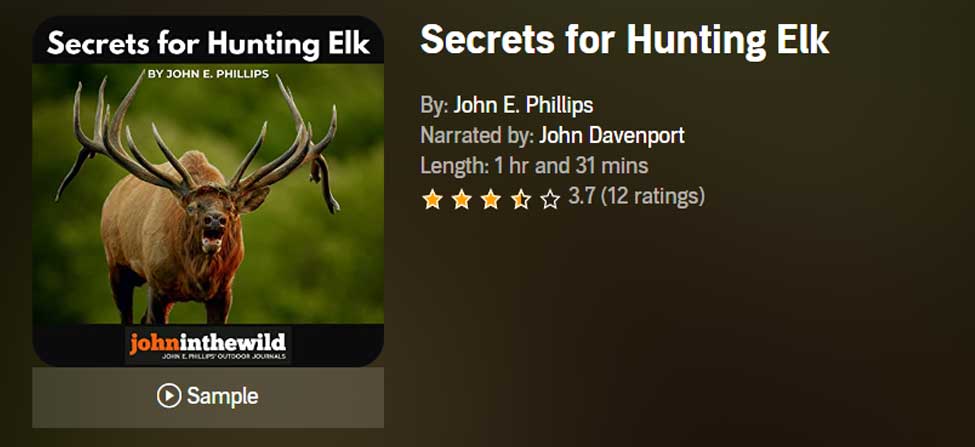
Secrets for Hunting Elk
The quickest, easiest (if there is an easy way), and safest way to find and take that bull elk of a lifetime will be to hunt with a guide.
Chad Schearer, a longtime Montana guide and TV personality, told me, “My hunter is my gun. If I get to the elk, and my hunter isn’t with me, then we don’t take the elk. My job is not only to find the elk but also to help the hunter get to the elk and make the experience as enjoyable as I can for him.” That’s the kind of fella with whom I want to go elk hunting.
An elk hunt can be tough, but it doesn’t have to be so tough that you don’t enjoy it. That’s why this elk hunting book starts with the confessions of an elk guide and with Chad Schearer’s philosophy of what the guide and the hunter’s relationship should be.
A good portion of your success will depend on your physical condition, and Matt Morrett of Harrisburg, Pennsylvania explains how an eastern hunter can get ready physically during June and July to hunt western elk, the animals he describes as, “Like deer or turkeys on steroids.”
Wayne Carlton, well-known elk hunter and TV and video personality from Montrose, Colorado, tells us what types of elk calls to use and what to say to the elk. Mike Miller of Colorado, another elk guide and Mossy Oak video personality, has tactics for the best equipment for bowhunting and gun hunting elk.
You’ll learn helpful strategies and hunting tips in this book, as well as some straightforward hunting methods that will help to make your elk hunt more successful.
“Thanks to the advice in your elk hunting books, I was able to call up a nice 6-point (6X6) bull elk! He was bugling like crazy. I called him in from about a ¼ mile away. Called him into bow range (about 40 yards away). It was a thrill!” ~Rob Brannon
VERSIONS: AUDIBLE & KINDLE
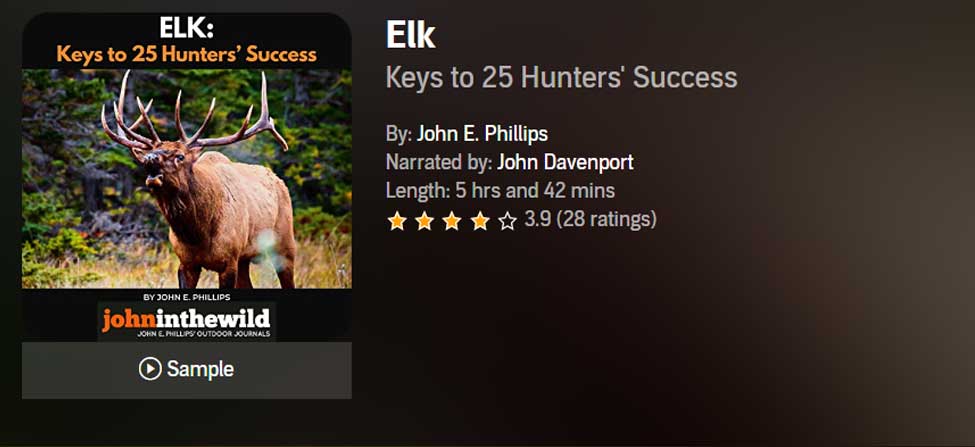
Elk: Keys to 25 Hunters’ Success
Often just one tip or tactic makes the difference in whether you take an elk home to dinner or have to hike back to the truck by yourself. In John E. Phillips’ latest elk book, Elk: Keys to 25 Hunters’ Success, you’ll learn from successful elk hunters the strategies they use to find and take elk.
Many know that the technique that seems to work most often is to hunt where other elk hunters don’t and understand where the elk are before you go on a hunt by studying data from each state, visiting HuntData (see chapter 1), examining maps, and reading postings on elk forums.
This book also tells you how to get ready physically for an elk hunt, including participating in Train to Hunt Competitions, what gear you need to take, how to enjoy a successful do-it-yourself elk hunt, or how to pick the best elk guide for you. You’ll also hear about the X System and the Broken Y System of hunting elk.
Although no one person has all the answers on how to help you find and take your elk, I’m convinced that this book’s outdoors men and women will teach you how to have satisfying elk hunts.
As my friend Karl Badger once told me, “Elk hunting doesn’t get any better than when I ride horses into the high backcountry, see two grizzly bears, hear a pack of wolves howl close to camp all night long, eat plenty of delicious food prepared on a fire and enjoy the company of good friends.”
VERSIONS: AUDIBLE, KINDLE & PRINT
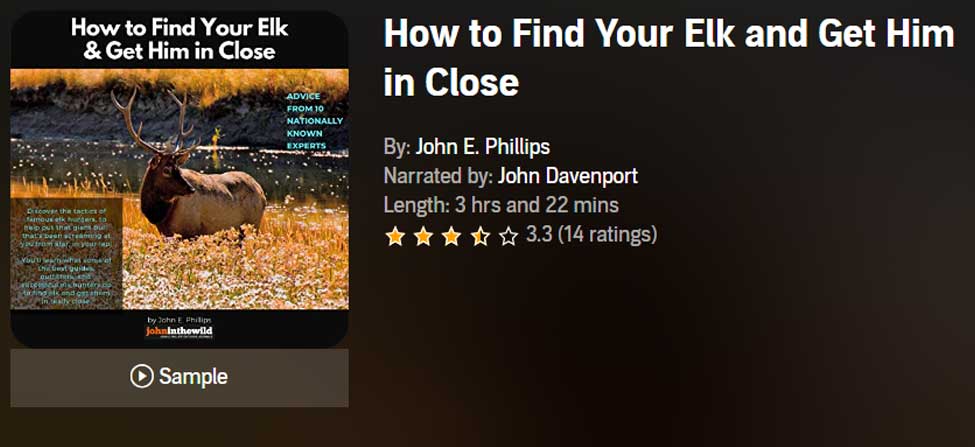
How to Find Your Elk and Get Him in Close will teach you the tactics of 10 nationally known elk hunters, to help put that giant bull that’s been screaming at you from afar, in your lap. You’ll learn what some of the best guides, outfitters, and successful elk hunters do to find elk and get them in really close.
Also in this audiobook, you’ll notice that the majority of the experts call elk to within bow range. We selected numerous bowhunters and bowhunting guides, since the bowhunter has to get much closer to a bull than the gun hunter does – often less than 20 or 30 yards – practically in your lap.
On one elk hunt, I’d heard this bull bugle all morning. My guide had called him within 30 yards, and he was standing just inside black timber. I saw the smoke from his nose wafting out into the icy air less than 30-yards away. All the bull had to do was step out, and I could take the shot with my bow. But then, through no fault of my guide or me, the bull vanished.
The only conclusion I could come up with to understand why the bull I wanted to take with my bow hadn’t stepped out and given me a shot, was because he got raptured. He evidently had left the earth with no trace of himself.
This hunt was when I started wanting to learn more about hunting elk up close. In this book, I’ve tried to find some of the most knowledgeable, experienced, and practical elk hunters. I’ve always found that the best way to learn any outdoor skill, is to either hunt or fish with the best sportsmen in that field.
Often, in elk hunting, that means elk guides, who generally hunt every day of the season and receive a salary for every hunter they guide. So, I’ve put together a group of some of the best elk hunters I know to help us all learn how to find bull elk and get them in close.
VERSIONS: AUDIBLE, KINDLE & PRINT
Tomorrow: Knowing Rocky Mountain Elks’ Characteristics

